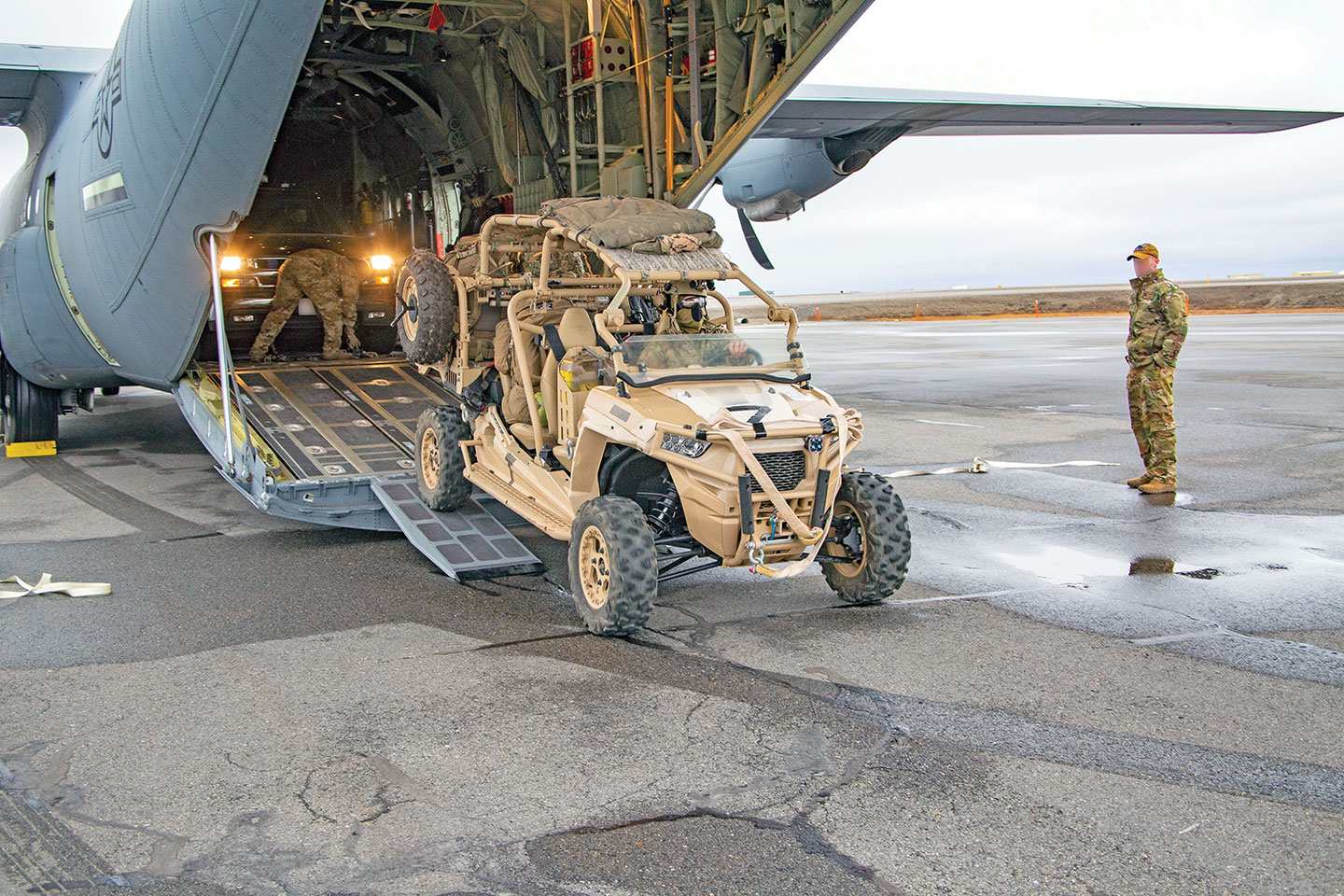Naval Special Warfare operators perform a high-altitude low-opening jump during operation Arctic Edge 2022 in Alaska. DoD Courtesy Photo
DR. JAMES R. MORTON JR./UNIVERSITY OF ALASKA FAIRBANKS
The rear ramp of the C-130 drops down, allowing a stinging minus 70-degree wind to overwhelm the aircraft cabin as a handful of U.S. Navy SEALs prepare to conduct a military free fall (MFF). The SEAL team’s objective is to link up with a U.S. Navy submarine that is breaching the ice cover on the Arctic Ocean. They have learned how to protect themselves from such extreme cold weather and ensure their equipment is operational in such blistering conditions. Within minutes, the SEAL MFF team is in free fall in the Arctic cold and lands to successfully connect with the submarine below. This exercise exemplifies the ongoing commitment the United States and its allies have to secure the western portions of the Arctic. Special operations forces (SOF) are advancing their capacity and effectiveness to operate with precision in the rapidly changing Arctic.
To better understand how SOF are contributing to the overall effort to secure the Arctic, consider the following four dimensions: reinforce effective partnerships, exercise regularly and in varying conditions, enhance SOF development, and foster a persistent presence in the North American Arctic. These perspectives provide a lens by which to understand how SOF are improving their preparedness to secure and fight in the Arctic.

Partnerships among allies, Indigenous people, Arctic communities and businesses are just a few examples where shared interests are being leveraged for symbiotic outcomes. The Arctic is secured and will remain so when such relationships emphasize a shared purpose of defending homelands while improving self-interest. For example, protecting sovereignty is one shared interest. Indigenous communities have long occupied Arctic lands and have a vested interest in mitigating vulnerabilities, improving economic opportunities and securing subsistence ways of living. Partnership with military forces provides an array of mutually beneficial outcomes. SOF units, for example, can learn from Indigenous people how to thrive in Arctic conditions while Native communities benefit from economic opportunities tied to forces training in the region.
Military exercises foster collaborative relationships, improve operational capabilities and support interoperability among SOF commands. One instance is the annual U.S. Joint exercise Arctic Edge, conducted by U.S. Northern Command (USNORTHCOM) and hosted by Alaskan Command (ALCOM). Special operations forces from the U.S. and allied nations work together during this winter tactical exercise to improve operational effectiveness, become more familiar with the region and meet training objectives tied to defending the homeland. This and like exercises foster familiarization with the ways U.S. Special Operations Command and the Canadian Special Forces Command operate in extreme cold weather conditions, and further develop procedures to improve interoperability. Exercises in the Arctic serve as a vehicle for SOF and supporting units to effectively secure and defend the North American Arctic.
By focusing on securing the North American homeland, SOF planners and leaders can identify how to better organize, train and equip SOF units to be mission-ready. Such exercises identify lessons to be learned and suggest solutions; allow for practice in operational maneuvers to improve tactics, techniques, and procedures; and explore and refine future equipment needs. These steps improve SOF development and contribute to SOF’s capabilities to meet the rigors of an ever-changing Arctic environment.

Lastly, Special Operations Command North is “beyond the watch” by persistently focusing on how to best secure and defend the North American Arctic by way of SOF operations in service to the USNORTHCOM commander. This requires an ongoing presence in the Arctic to allow for the conditioning of SOF operators, positioning operational support elements, and enhancing familiarization with commands on the subtle and nuanced attributes of the Arctic. With a regular presence in the Arctic, SOF units can refine and adjust to climate changes, address organizational shifts to adapt to conditions, and make force adaptations for improved operational capabilities.
In sum, SOF have a vital role in securing and defending the North American Arctic. In partnership with allies and those who live and thrive in the Arctic, SOF commands can exercise and enhance SOF capabilities and forecast needs to best defend the Arctic. Having a persistent and ongoing presence in the Arctic facilitates the learning and conditioning of SOF operators to optimize their effectiveness. Again, these four dimensions (partnerships, exercises, force development, and presence) illustrate how U.S. and allied SOF commands are at the ready.


Comments are closed.